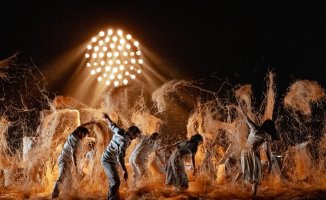It's hard to refer to "a lonely palm tree" without sounding like redundant verse and cheap poetry. Let it serve as an excuse that it is, indeed, the loneliest palm tree in the world, the last of its kind in the wild. This is according to a group of Indian botanists who last week launched an awareness campaign, primarily among the neighbors of the Himalayas, who are its guardian angels.
Any palm tree evokes exoticism, but Windamere's also has its dose of poetry and glamour. Not surprisingly, it takes its name from the garden of the colonial hotel where, 32 years ago, an expert from the Edinburgh Botanic Garden, Henry Noltie, believed he had found a rare species of palm tree.
Three years later, two fanatics of these trees - one German, the other British, Tobias and Martin - traveled the Himalayas with the same eagerness with which Stanley was looking for Livingstone in Africa, without losing sight of the 'observation of the Scot. They discovered that some palm trees that in India, the world's rainiest, were defined as unique, were actually the same as those in Kathmandu. But when they arrived at the hotel in Darjeeling at midnight, flashlight in hand, they were stunned.
But in the light of day, even more so. That species of palm, indeed, had never been described. To rule out that it was a hybrid, they had to find it in the wild. It was on his next trip, after months of exploration, thanks to the directions of a native – in that corner of Bengal sandwiched between Nepal, Sikkim and Bhutan – called Victor Rai. There were about fifty specimens, distributed in two nearby ravines.
Scientifically it would be called Trachycarpus latisectus, but popularly it was already the Windamere palm. One more, among the hundred Indian species, threatened since its very discovery. Fifteen years later, the population had dropped to 28. Today, one remains. Hence the recent campaign of the Himalayan delegation of the Botanical Survey of India, surely when extinction is already sung.
The only ray of hope is that it is known where it is endemic, near Kalimpong, and in the meantime, thousands of seeds have been spread among fans on five continents. Capable of reaching twelve meters and growing at more than two thousand meters of altitude, it is also one of the most resistant to the cold, it withstands temperatures below zero. Some neighbors have managed to grow it in their gardens and have learned that the seeds have value, even if they are not the ones reselling them on the Internet, for a price three hundred times higher.
Darjeeling gives its name to one of the most delicate teas in the world. But the Himalayan station was also the retreat where the colonial government ruled or pretended to rule the vastness of India during the hottest half of the year. Between March and April, half of the Administration, as well as the wives and children of the officers, packed their bags in Calcutta for Darjeeling. Three-quarters of a century later, when the capital moved to New Delhi, the procession made its way to Simla.
The Windamere Hotel also has its rosy history. When Sikkim was still independent, the crown prince used to go there to soak away his sorrows. The misfortune that her ancestors gave Darjeeling to British India, as well as her recent widowhood. In one of these sessions he met his Grace Kelly. An American in her twenties, rich, her name was Hope Cooke, and she was the niece of the ambassador to Iran. Three years later they were king and queen and appeared in People. Indira Gandhi sensed the danger and looked for a way to annex Sikkim, today the least populated state in India.
Many years before declaring that she would never go hungry again, Scarlett O'Hara, i.e. the British actress Vivien Leigh, was born in Darjeeling, as her Anglo-Indian mother had done before. The wind of history took the British away, to bring more Nepalese. Also the guerrilla brother of the Dalai Lama, Gyalo Thondup, who spends his last years there before taking his secret dealings with Washington to the grave , Beijing and New Delhi, although some he already revealed in his memoirs, The Noodle Maker of Kalimpong.













